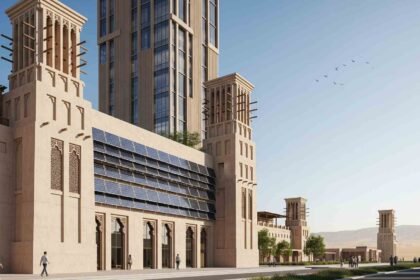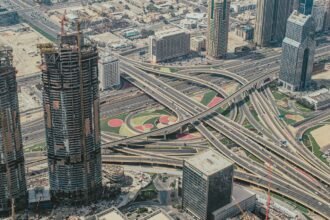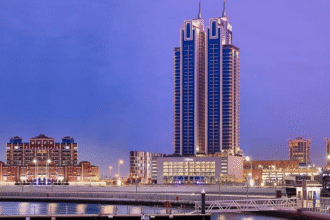The Roads and Transport Authority (RTA) in Dubai has officially launched the Al-Safa Street Improvement Project, covering a 1,500-metre stretch between Sheikh Zayed Road and Al-Wasl Street.
Project Essentials
The project involves the construction of two bridges and two tunnels, with a combined length of 3,120 metres. Once complete, it is expected to ease traffic along one of Dubai’s busiest corridors. Travel time on this stretch is projected to fall from 12 minutes to just three, representing a 75 percent reduction, while overall road capacity is set to double from 6,000 to 12,000 vehicles per hour in both directions.
The work goes beyond new structures. The RTA has outlined a series of upgrades that include widening surface roads, improving intersections and traffic signals, enhancing lighting and signage, and reinforcing the drainage system for rainwater. The plan also covers the protection and relocation of existing utilities to ensure smooth execution of the project.
Structural Elements
Two major bridges form the centerpiece of the development. The first bridge will span 1,005 metres, offering four lanes and handling up to 6,400 vehicles per hour. It is designed to carry traffic flowing from Al-Wasl Street toward Sheikh Zayed Road and Financial Centre Street. The second bridge will be 360 metres long with two lanes, providing space for about 2,800 vehicles per hour, and will serve drivers heading from Al-Satwa Road to Sheikh Zayed Road and Financial Centre Street.
The tunnels are equally significant in scope. The first tunnel stretches 1,005 metres and has two lanes, with capacity for 3,200 vehicles per hour. It is meant for traffic moving from Sheikh Zayed Road and Financial Centre Street toward Al-Wasl Street. The second tunnel is located at the junction of Al-Wasl Street and Al-Safa Street. It runs 750 metres long and carries four lanes, two in each direction, with a total capacity of 6,400 vehicles per hour.
Urban Enhancements
Beyond traffic improvements, the RTA has also emphasized the project’s urban features. The design incorporates sidewalks and cycling tracks to encourage walking and cycling, landscaped areas to improve the public realm, and plazas that create spaces for social interaction. These elements are aimed at blending road efficiency with a more livable urban environment, supported by aesthetic and creative enhancements to the surroundings.
Strategic Context
The Al-Safa Street upgrade is part of a wider RTA plan that includes the development of Umm Suqeim Street and Al-Wasl Street. The Al-Wasl project covers 15 kilometres and consists of six intersections and five tunnels stretching 3,850 metres. This development is expected to raise road capacity from 8,000 to 12,000 vehicles per hour and cut travel times significantly. Meanwhile, the Umm Suqeim project spans 6 kilometres and involves four bridges and three tunnels, totaling 4,100 metres, to enhance links across several key corridors.
Early Steps Already Underway
Work has already begun on the Al-Safa Street project. Al-Mawazeen Soil Testing & Surveying Company has initiated soil testing and surveying services, with U.S.-based consultancy CDM Smith acting as the project consultant.







